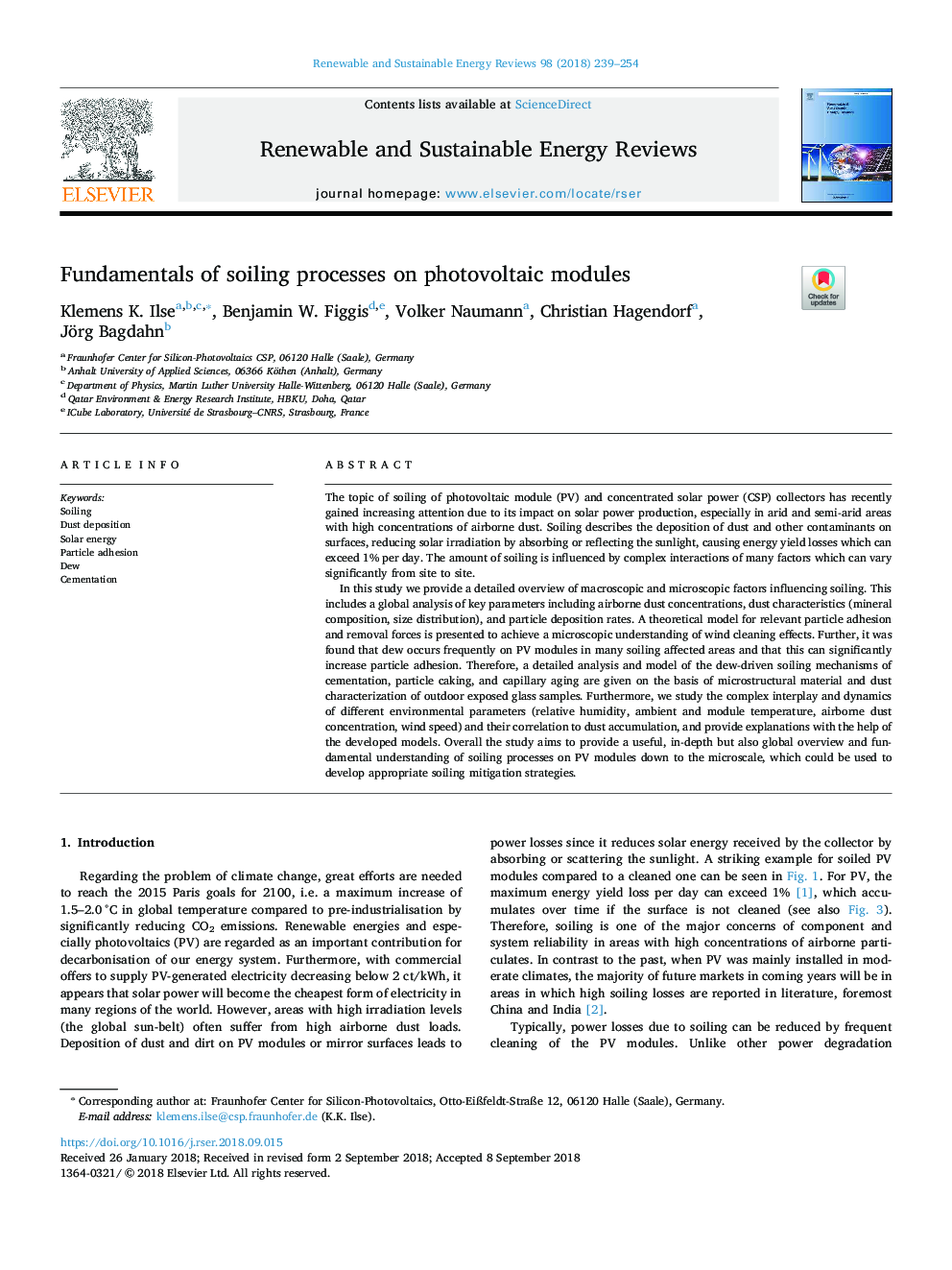| Article ID | Journal | Published Year | Pages | File Type |
|---|---|---|---|---|
| 11026387 | Renewable and Sustainable Energy Reviews | 2018 | 16 Pages |
Abstract
In this study we provide a detailed overview of macroscopic and microscopic factors influencing soiling. This includes a global analysis of key parameters including airborne dust concentrations, dust characteristics (mineral composition, size distribution), and particle deposition rates. A theoretical model for relevant particle adhesion and removal forces is presented to achieve a microscopic understanding of wind cleaning effects. Further, it was found that dew occurs frequently on PV modules in many soiling affected areas and that this can significantly increase particle adhesion. Therefore, a detailed analysis and model of the dew-driven soiling mechanisms of cementation, particle caking, and capillary aging are given on the basis of microstructural material and dust characterization of outdoor exposed glass samples. Furthermore, we study the complex interplay and dynamics of different environmental parameters (relative humidity, ambient and module temperature, airborne dust concentration, wind speed) and their correlation to dust accumulation, and provide explanations with the help of the developed models. Overall the study aims to provide a useful, in-depth but also global overview and fundamental understanding of soiling processes on PV modules down to the microscale, which could be used to develop appropriate soiling mitigation strategies.
Related Topics
Physical Sciences and Engineering
Energy
Renewable Energy, Sustainability and the Environment
Authors
Klemens K. Ilse, Benjamin W. Figgis, Volker Naumann, Christian Hagendorf, Jörg Bagdahn,
